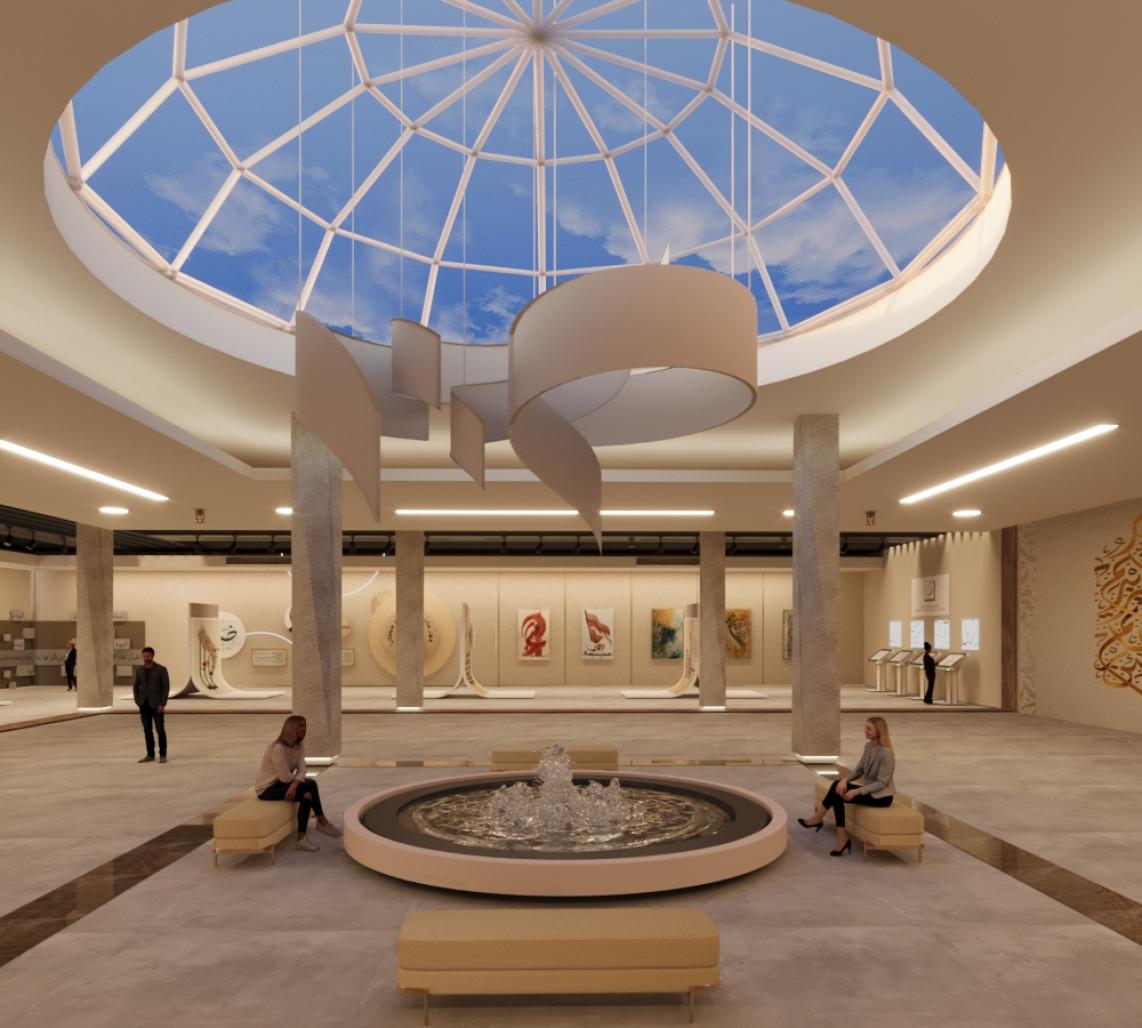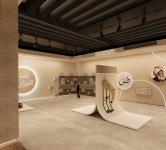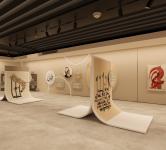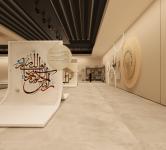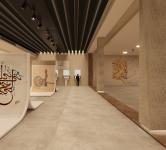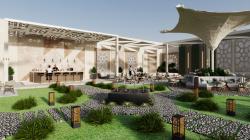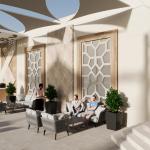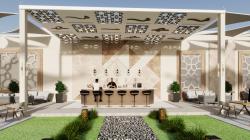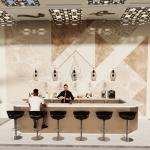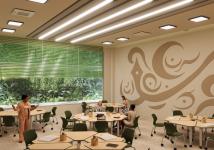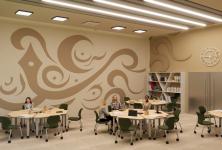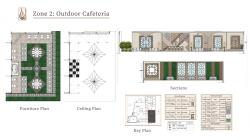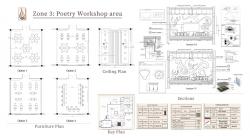The Arabic language is more than a medium of communication; it is the beating heart of Arab identity, history, and culture. In the context of globalization and cultural dilution, the Arabic Culture Center in October City seeks to reaffirm the centrality of Arabic as a cultural and intellectual heritage. Inspired by a timeless verse of Arabic poetry,
“A language that, when it reaches our ears, soothes our hearts.
It will remain a bond that unites us, for it is the hope of all who speak in the letter Ḍād.”) This verse highlights the importance and beauty of language in unifying Arabs and preserving their identity.
Through its design, exhibitions, and community programs, the center aims to become a living narrative of how language unites, inspires, and preserves Arab identity—while embracing modernity, sustainability, and innovation.
Applying the following SDGs in project:
8:Decent work and economic growth
11:Sustainable city and communities
Concept Application:
Zone 1: Exhibition Area
The exhibition draws from poetic verse celebrating the Arabic language as a bond that unites and soothes hearts. Inspired by the timeless beauty of Arabic calligraphy, the design metaphorically uses the paper effect — symbolizing history, memory, and storytelling — to create fluid, layered exhibition elements. Through repetition, these forms build a visual rhythm that echoes the structure of Arabic poetry and script.
Visitors journey through the evolution of scripts, engage at an interactive calligraphy station, and experience an illuminated verse wall celebrating cultural values.
At its heart, a circular water fountain under a skylight offers a serene pause, symbolizing the continuity and harmony of the Arabic language across time.
Materials & Systems
The exhibition area features floating paper-inspired panels in wood with calligraphy
Matte finishes, and smart climate systems enhance comfort alongside interactive digital displays and acoustic panels.
Layered warm lighting, a skylight over a central fountain, and an earthy palette create an immersive journey celebrating the rhythm and beauty of Arabic script.
Zone 2: Outdoor Cafeteria
The outdoor cafeteria design draws from the fluid elegance of Arabic calligraphy and the geometric abstraction of the Islamic star motif creating harmonious dialogue between past and present, tradition and modernity.
Materials & Systems
The outdoor cafeteria features pergolas and canopies systems provide passive shading and cooling airflow, complemented by locally sourced natural stone flooring. Modular, curved seating made from recycled wood and powder-coated steel. Sustainability is reinforced through permeable paving for rainwater management, drought-tolerant native planting, and smart lighting and irrigation systems. Discreet warm-toned LED lighting softly with open layout aligned with prevailing breezes enhances airflow for thermal comfort.
Zone 3: Poetry Workshop area
The design of the poetry workshop area is inspired by the elegant form of the Qalam—the traditional Arabic calligraphy pen—symbolizing the timeless power of knowledge, learning, and communication.
systems
The poetry workshop area combines smart climate control, discreet integrated audio for clear sound, and calligraphy-inspired acoustic panels that reduce echo—seamlessly merging comfort, performance, and cultural symbolism.
2024
Project Type: Interior Architecture
Project Title: Arabic Culture Center
Academic Year: 2024–2025
Location: 6th of October City, Giza, Egypt
University: MSA University – Faculty of Arts and Design
Tools & Software: AutoCAD, 3ds Max, Corona Renderer, Adobe Photoshop.
Supervising Professors: Prof. Dr. Khaled Hawas, Prof. Dr. Ola Hashem, Prof. Dr. Amany Mashhour, Prof. Dr. Hoda Gad, Dr. Tarek Fouad
Teaching Assistant: T.A. Dalia Fekry
Favorited 1 times
